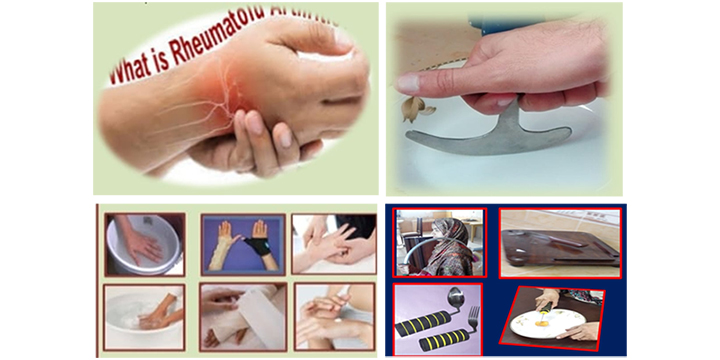
Rheumatoid Arthritis Education and Occupational Therapy
Written by:
Farzana Ashfaq
Senior Lecturer – Occupational Therapy Incharge ADL training
Innovator modified devices
Mrs. Mahira found herself overwhelmed by feelings of despair when she began experiencing persistent pain in her right arm and fingers over the past two months, with particularly troublesome morning stiffness. To compound matters, she noticed her fingers gradually bending towards the little finger, making everyday kitchen tasks increasingly challenging. Seeking medical advice, she consulted a doctor who then referred her to a rheumatologist. Despite being prescribed medications and supplements, her condition continued to worsen, prompting her to switch consultants regularly. Eventually, she sought help at a rehabilitation unit, where during an interview with a therapist, she revealed that no doctor had ever advised her on energy-saving techniques or provided guidelines for managing flexed fingers. Following this revelation, she was enrolled in an RA education program, where she received guidance on energy conservation techniques and lifestyle modifications during the first week. In the subsequent week, she was equipped with modified kitchen and grooming devices to enable her to work independently and safely.
Ms. Saima’s journey exemplifies the success of SIPMR’s ADL training area. Diagnosed with rheumatoid arthritis and suffering from limited range of motion and pain due to deformities, she underwent a four-week education and training program. Upon completion, she was reassessed using an ADL checklist for RA, revealing significant improvement in functionality. She was provided with devices such as rocker’s knives, cutting boards, and curved spoons, along with meditation sessions. After six months of training, Ms. Saima was discharged with home guidelines and follow-up instructions. Her feedback speaks volumes: “I feel much better after using these devices, making home tasks easier. I urge other patients like me to visit SIPMR and improve their quality of life.”



